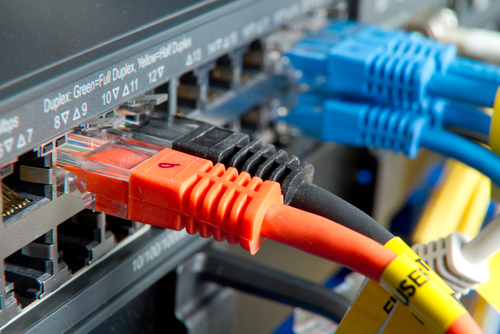IBM researchers have set a new speed limit on multimode fibre, extending the life of a type of cable which is widely installed, but has been declared obsolete many times in the past.
The IBM boffins managed to transmit data at 64 Gbps over a multi-mode cable, of a kind typically used for short-distance connections. Faster data speeds on that cable could extend the life of many thousands which are installed in buildings and campuses – although the really high speeds will only be available on short cable runs.
Replacement Concerns
Multi-mode fibre cables are generally used for short-haul backbone applications because their high capacity and reliability, as well as low equipment cost, made them a popular option. The drawback however is that multi-mode fibre cables tend to be more limited by distance and capacity. Typical transmission speed and distance limits are 100 Mbps for distances up to 2 km, 1 Gbps up to 1000 metres, or at a push 10 Gbps up to 550 metres.
Single-mode fibre cables on the other hand can transmit data at a higher speed and over longer distances, and are universal in long-haul and telecoms networks.
Campuses with multi-mode fibre cables have been nervously looking at the soaring network demands of their kit, and wondering when they will have to rip out the cables and replace them with single-mode fibre cables.
But IBM has now demonstrated that multi-mode fibre cables do indeed have a future, and should be able to deal with the growing needs of servers, data centres and supercomputers for some years to come.
 IBM researchers sent data at a rate of 64 Gbps over a cable 57 meters long using a type of laser called a vertical-cavity surface-emitting laser (VCSEL). The researchers achieved a rate that was about 14 percent faster than the previous record and about 2.5 times faster than the capabilities of today’s typical commercial technology. The researchers reportedly used standard non-return-to-zero (NRZ) modulation to send the data.
IBM researchers sent data at a rate of 64 Gbps over a cable 57 meters long using a type of laser called a vertical-cavity surface-emitting laser (VCSEL). The researchers achieved a rate that was about 14 percent faster than the previous record and about 2.5 times faster than the capabilities of today’s typical commercial technology. The researchers reportedly used standard non-return-to-zero (NRZ) modulation to send the data.
“Others have thought that this modulation wouldn’t allow for transfer rates much faster than 32 Gbps,” said Dan Kuchta of the IBM T.J. Watson Research Center in New York.
Apparently, until now, many researchers had thought that achieving higher transmission rates would require turning to more complex types of modulation, such as pulse-amplitude modulation-4 (PAM-4).
“What we’re showing is that that’s not the case at all,” said Kuchta. And he went on to say that because the research team was able to achieve fast speeds even with NRZ modulation, it shows that “this technology has at least one or two more generations of product life in it.” Kuchta will describe these results at next month’s 2014 OFC Conference and Exposition in San Francisco. The technology is also apparently immediately available for commericalisation.
Rule Of Thumb
The IBM research team used a combination of new technologies to achieve such high speeds. This included VCSEL lasers developed at Chalmers University of Technology in Sweden and custom silicon-germanium chips developed at IBM Research.
“The receiver chip is a unique design that simultaneously achieves speeds and sensitivities well beyond today’s commercial offerings,” said Kuchta. “The driver chip incorporates transmit equalisation, which widens the bandwidth of the optical link. While this method has been widely used in electrical communication, it hasn’t yet caught on in optical communication,” he said.
“Researchers typically rely on a rule of thumb that says the usable data-transfer rate is about 1.7 times the bandwidth,” said Kuchta. “That means that with the VCSEL laser, which has a bandwidth of about 26 GHz, the rate would be only about 44 Gbps.”
“What we’re doing with equalisation is we’re breaking the historical rule of thumb,” Kuchta said.
But despite the breakthrough, Kuchta warned that the fast speeds only worked for a distance of 57 meters, so distance still does remain an issue. However, it should mean that multi-mode fibre cables remains a viable solution for transmitting data within a building, especially considering that about 80 percent of the cables at data centres and most, if not all, of the cables used for typical supercomputers are less than 50 metres long.
Last month, Alcatel-Lucent and BT set a record for data transfer over single-mode fibre, reaching an incredible 1.4Tbps while using commercial grade hardware on an existing network connection.
What do you know about fibre broadband? Try our quiz!





